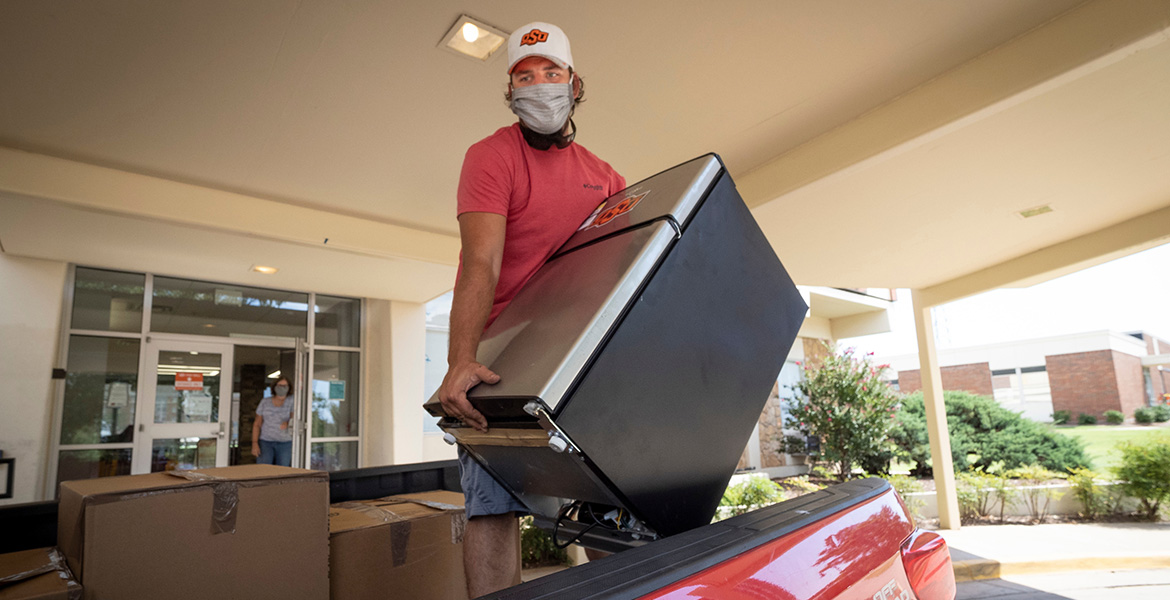
Put renter’s insurance on back-to-school shopping list
Wednesday, August 5, 2020
Students heading to college this fall soon will be packing suitcases and loading their vehicles full of mementoes and necessities for their new home away from home.
The transition typically involves personal belongings that carry high monetary costs as well as emotional value, said Cindy Clampet, Oklahoma State University Extension family resource management assistant specialist.
“When it comes to school supplies, renter’s insurance is just as important as a computer or textbooks. Most of today’s college students have quite a few electronics, including a laptop, smart phone, television, printer and the list goes on,” Clampet said. “These electronics, coupled with clothing, household items and furniture, add up to quite an investment. A renter’s insurance policy will help ensure things can be replaced in the event of a fire, theft or weather-related disaster.”
Clampet said parents should first check with the company that holds the homeowner’s insurance policy. In some cases, that policy may cover the student’s belongings, but it may depend on whether the student is living in campus housing or renting off-campus. If coverage does not extend to the student’s belongings, ask the company about renter’s insurance options.
Renters face the same risks and responsibilities homeowners have of losing possessions inside a building, Clampet said.
“The landlord of the property has insurance on the structure itself, but it won’t cover the renter’s personal property,” she said. “This typically is the same for students living in campus housing.”
Leon McClinton, director of Housing and Residential Life at OSU, encourages student residents to consider purchasing renter’s insurance. They also should ask about the school’s policy of personal property coverage.
“Our students need to protect their personal belongings. OSU provides coverage only in limited circumstances, such as when the university is directly responsible for damages,” McClinton said. “In situations such as inclement weather, theft, mechanical failures or other circumstances, our residents are responsible for any damages that may occur to their personal property.”
There are several types of residential insurance policies, but if the student is living in an area that is prone to flooding or earthquakes, a separate policy or rider likely will be needed. Policyholders should understand whether a loss will be covered by actual cash value or by an item’s replacement cost.
“Be sure to let your insurance agent know about items that are particularly valuable, including jewelry, antiques or electronics,” Clampet said. “These may be covered only up to a certain amount. If you own items that are unusually expensive, such as a piece of jewelry, you may want to purchase a separate rider.”
To help ensure the renter is properly compensated for belongings damaged, Clampet has the following tips:
- Inventory all personal belongings.
- List each item, its value and serial number.
- Take photos of each item or video the items.
- Keep photos and video separate from the residence.
- Save photos and video data on the cloud or an external drive.
- Keep receipts in a fireproof lock box for newly purchased items.
If the student’s residence becomes unlivable due to a storm, fire, broken water pipe or other reason covered by the insurance policy, damages will be covered, along with additional living expenses.
“Extra living expenses typically are covered at about 30% to 50% of the total value of the policy. This means if you’re insured for $50,000, additional living expenses will be covered from $15,000 to $25,000, depending on the policy,” Clampet said.
The cost of renter’s insurance will vary depending on location, deductible and any additional coverage that may be needed. Overall, it is a relatively small investment to cover valuable property.
MEDIA CONTACT: Trisha Gedon | Agricultural Communications Services | 405-744-3625 | trisha.gedon@okstate.edu
